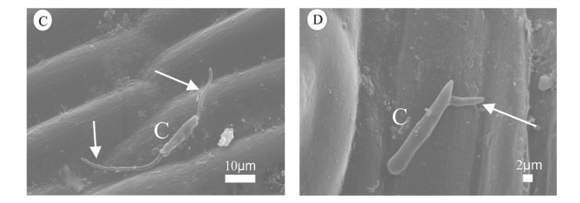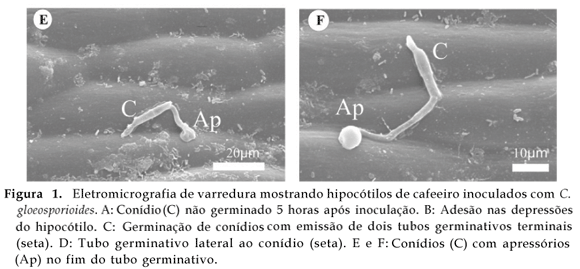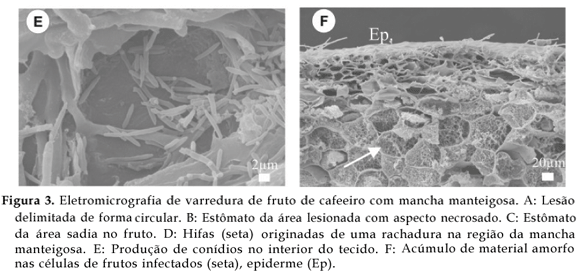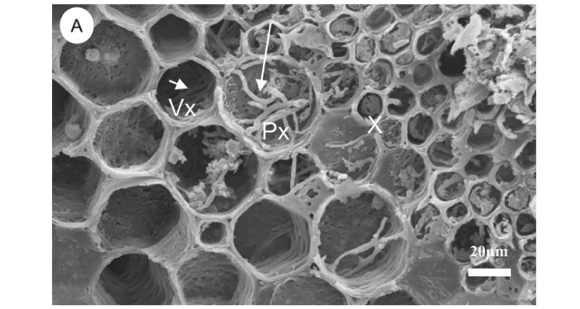In studies involving the interaction Colletotrichum gloeosporioides - coffee trees (Coffea arabica L.) there is little information regarding the pre-penetration, penetration and colonization pathways of this pathogen. The objectives of this work were: 1. to study through scanning electron microscopy (SEM) the pre-penetration and penetration events of C. gloeosporioides in hypocotyls of coffee plantlets; 2. to observe the colonization of Colletotrichum spp. in branches and fruits of coffee trees with blister spot symptoms. The study took place in three trials. In the first trial, it was observed and reported the pre-penetration events of C. gloeosporioides inoculated on hypocotyls of coffee cv. Acaiá Cerrado with and without wounds. The second trial was performed to investigate the colonization of diseased coffee branches that presented drastic wilt and local necrosis was observed. Finally the third trial investigated the colonization of this pathogen in diseased coffee fruits. When C. gloeosporioides was inoculated, germination could be observed in wounded hypocotyls 6 hours after inoculation. Better adhesion of conidia was evident at surface depressions of hypocotyls and germination started by emission of one or two terminal germ tubes. Round or sub-round shaped apressoria appeared 12 hours after inoculation. Up to 72 hours, acervula formation was not observed on inoculated tissues. The wilted branches presented colonization in the phloem and cortical tissues. In fruits at different stages of maturation, it was observed colonization in tissues near the epidermis and collapse of the stomata in the affected area.
Glomella cingulata; Coffea arabica; blister spot; scanning electron microscopy








